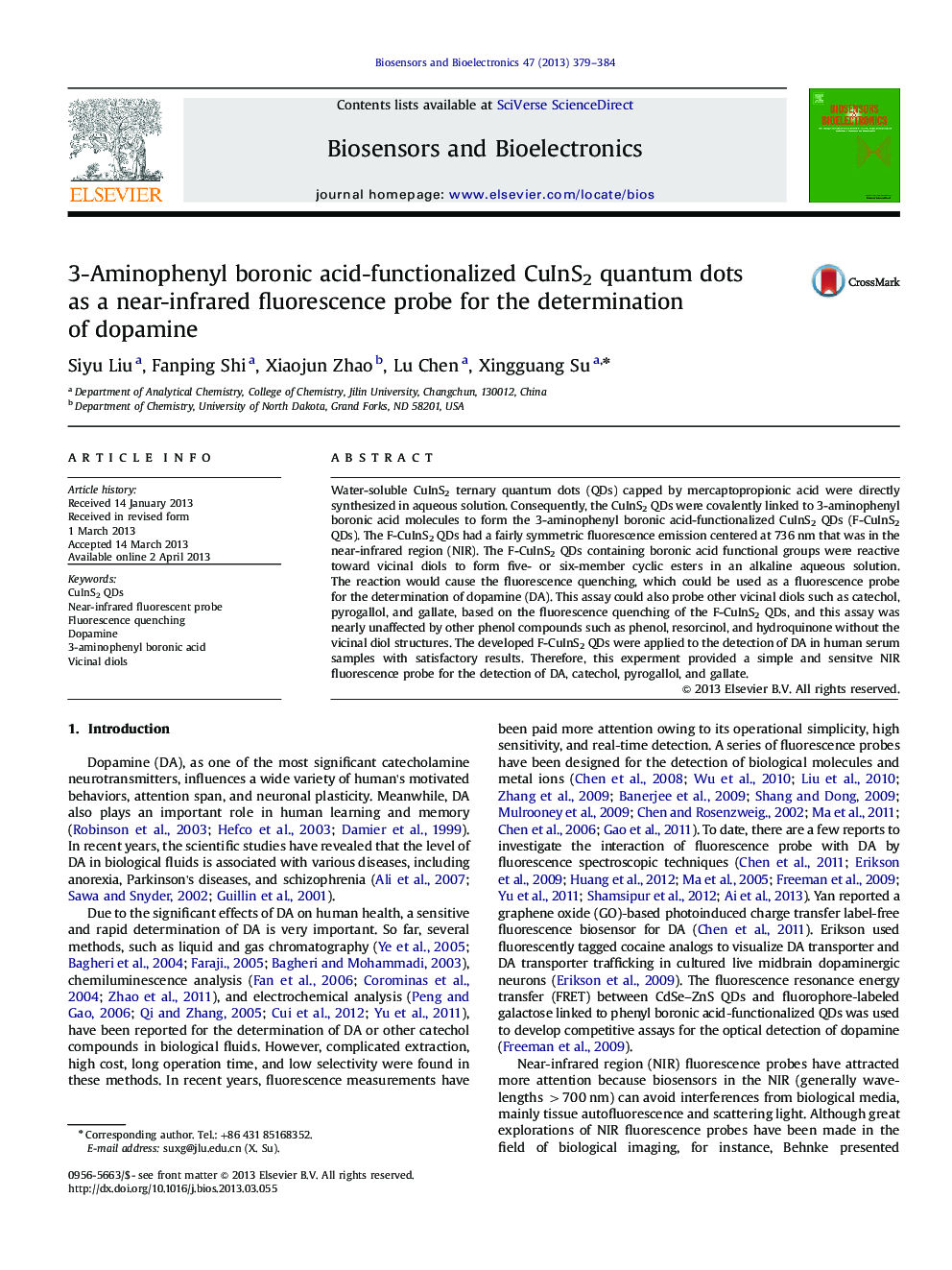| Article ID | Journal | Published Year | Pages | File Type |
|---|---|---|---|---|
| 866985 | Biosensors and Bioelectronics | 2013 | 6 Pages |
•The water-soluble CuInS2 QDs were functionalized with 3-aminophenyl boronic acid molecules.•The functionalized CuInS2 QDs had a fluorescence emission in the near-infrared region.•The functionalized CuInS2 QDs were used to detect dopamine through fluorescence quenching.•The fluorescence quenching was because the phenylboronic acid formed boronate esters with vicinal diols.
Water-soluble CuInS2 ternary quantum dots (QDs) capped by mercaptopropionic acid were directly synthesized in aqueous solution. Consequently, the CuInS2 QDs were covalently linked to 3-aminophenyl boronic acid molecules to form the 3-aminophenyl boronic acid-functionalized CuInS2 QDs (F-CuInS2 QDs). The F-CuInS2 QDs had a fairly symmetric fluorescence emission centered at 736 nm that was in the near-infrared region (NIR). The F-CuInS2 QDs containing boronic acid functional groups were reactive toward vicinal diols to form five- or six-member cyclic esters in an alkaline aqueous solution. The reaction would cause the fluorescence quenching, which could be used as a fluorescence probe for the determination of dopamine (DA). This assay could also probe other vicinal diols such as catechol, pyrogallol, and gallate, based on the fluorescence quenching of the F-CuInS2 QDs, and this assay was nearly unaffected by other phenol compounds such as phenol, resorcinol, and hydroquinone without the vicinal diol structures. The developed F-CuInS2 QDs were applied to the detection of DA in human serum samples with satisfactory results. Therefore, this experment provided a simple and sensitve NIR fluorescence probe for the detection of DA, catechol, pyrogallol, and gallate.
